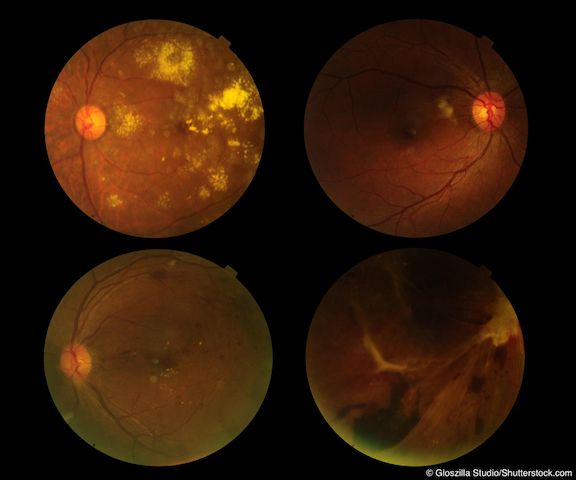What newly diagnosed AMD patients need to know

Numerous websites are designed to raise awareness about age-related macular degeneration (AMD), some sponsored by the National Eye Institute, others by disease-specific foundations, and others by industry.
Here is a basic overview of the websites and what can be found on them.
Personalized Cause
AMD/Low Vision Awareness have been coupled together in Personalized Cause (https://www.personalizedcause.com/health-awareness-cause-calendar/amd-low-vision-awareness-month), sponsored by the National Eye Institute Information Office. According to the website, “these disorders have an impact on people of all ages, yet few are aware of AMD and low vision symptoms, risk factors, and the way to manage these disorders. In the United States, the most common causes of low vision are AMD, cataracts, glaucoma and diabetic retinopathy. AMD is the leading cause of vision loss affecting more than 15 million adults aged 50 and up.”
Personalized Cause supports AMD/Low Vision Awareness Month with custom awareness ribbons, wristbands, and fabric ribbons.
Facts about AMD
Most patients will not know a lot about AMD prior to their diagnosis, and the National Eye Institute has developed a patient-friendly guide on what patients should know about the disease (https://nei.nih.gov/health/maculardegen/armd_facts). Among the topics it tackles:
* What is AMD? In layman’s terms, the site notes that AMD advances so slowly that vision loss does not occur for a long time. In others, the disease progresses faster and may lead to a loss of vision in one or both eyes. As AMD progresses, a blurred area near the center of vision is a common symptom. Over time, the blurred area may grow larger or you may develop blank spots in your central vision. Objects also may not appear to be as bright as they used to be.
* Who is at risk? Besides age, the NEI notes smoking, race, family history and genetics are all risk factors. (The NEI does alert patients that the American Academy of Ophthalmology does not recommend routine genetic testing for AMD, and insurance generally does not cover genetic testing for this disease.)
* How is AMD detected? NEI reminds patients that only dilated eye exams can detect AMD, and explains what this type of eye exam may include.
* What are the stages of AMD? Along with describing the three stages (early, intermediate, and late AMD), this section also alerts patients that the disease may not be in both eye simultaneously, or that both eyes may have different stages of the disease.
Finally, the site describes how ophthalmologists are likely to treat the disease based on its stage. No treatment exists for early AMD; there are potential advantages of nutritional supplements for intermediate disease [including findings from its Age-Related Eye Disease Studies (AREDS and AREDS2) trials)], and treatment for advanced stages “are not a cure,” but may be able to stop further vision loss. Treatments for this later stage include intravitreal injections, photodynamic therapy, and laser surgery.
(Although the website does not discuss end-stage AMD, there is a surgical option for patients with this disease, VisionCare Technologies’ Implantable Miniature Telescope.)
Finally, the site notes low vision services may help patients cope with the loss of vision. It also recommends using a low vision rehabilitation services and working with a low vision team to maintain as much independence as possible.
Joy of Sight
Bausch + Lomb and Prevent Blindness, the nation’s oldest volunteer eye health and safety organization, encourages the public to give vision the same attention as they do their heart during National AMD Awareness Month through its Joy of Sight site (https://www.joyofsight.com/amdaware.html).
On its website, the groups encourage people to share their stories on Facebook or other social media with a hashtag #WhyEyeFight.
The site also brings attention to family history and encourages people to visit their eye doctors if they are at risk, and even if not at risk, to undergo a dilated eye exam annually.
Membership to the Joy of Sight is free, and members “receive exclusive coupons for PreserVision eye vitamins that can save you over $60 a year.” (Bausch + Lomb markets the PreserVision brand of eye vitamins.)
Among the advice found on this site: monitor vision weekly via an Amsler grid, keep eye doctor appointments, quit smoking, consider nutritional supplementation, and maintain overall health. The site encourages people to join support groups and provides links.
Other useful websites
Although February is deemed “AMD Awareness Month,” several organizations work year-round to provide patients with general information about the disease and serve as a place where patient stories can be readily shared.
Among these:
- AMD Alliance International (http://www.amdalliance.org/information/)
- American Academy of Ophthalmology’s Eye Smart (https://www.aao.org/eye-health/diseases/amd-macular-degeneration)
- American Society of Retina Specialists (https://www.asrs.org/patients/retinal-diseases/2/age-related-macular-degeneration)
- Foundation Fighting Blindness (https://www.blindness.org/)
Newsletter
Keep your retina practice on the forefront—subscribe for expert analysis and emerging trends in retinal disease management.